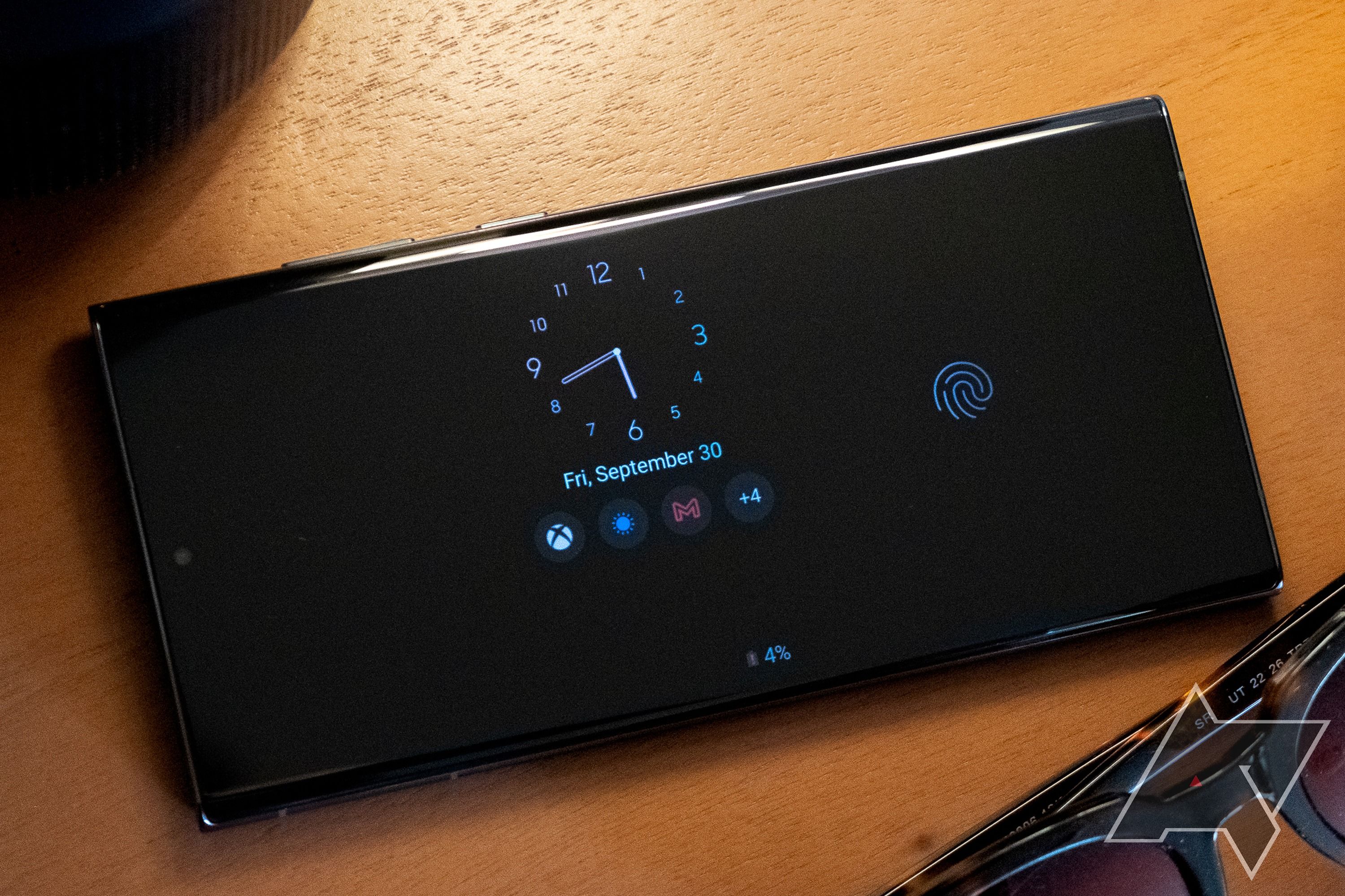Samsung has offered Always On Display (AOD) functionality on its mid-range and premium Samsung Galaxy phones for several years. This feature provides valuable information that pops up on the lock screen, even without you touching your phone. Over time and software releases, Samsung has updated the AOD to be a customizable info hub where you can look at data like the weather, upcoming alarms, the time and date, what music is playing, and more. It's a handy feature for those who keep their Galaxies out on the table beside them to glance at.
How to customize Always On Display on your Samsung Galaxy phone
Samsung gave AOD customization a big boost around the UI 4 update and has continued adding features. You may lack some customization options if your Samsung phone uses an older operating system. That's why we recommend updating to the latest software that your Samsung phone will support before continuing.
-
Go to Settings > Lock screen > Always On Display. Ensure that the feature is enabled. If it's disabled, it will be grayed out.
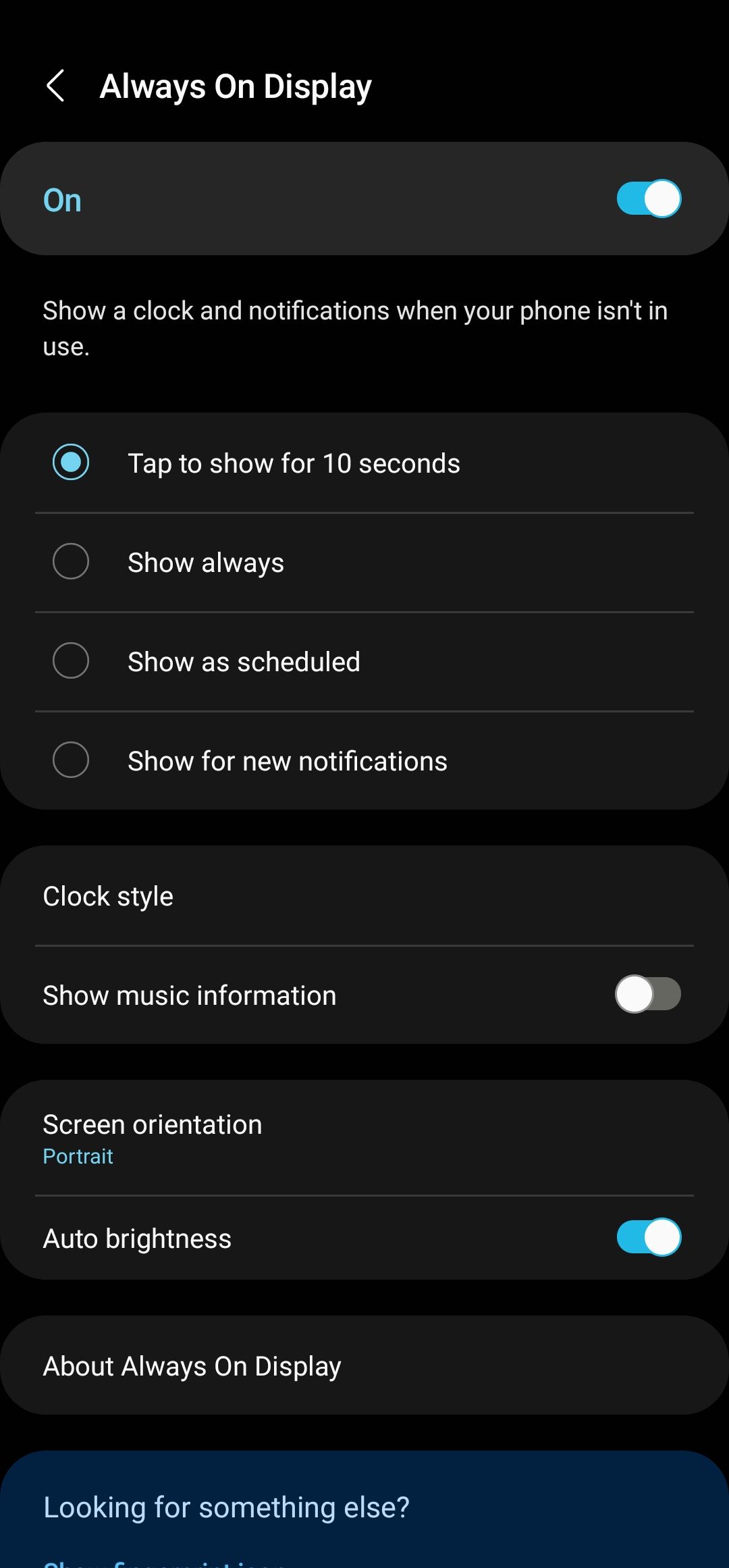
- Set up the Always On Display screen to show up in several ways: Only for a few seconds when you tap the screen, always on no matter what, during a scheduled time (such as while at work), or only when you get a new notification. If you aren't sure what setting to choose, start with something like only on a tap or during set hours while at work. These settings keep AOD useful while helping you save battery life.
-
Tap Clock style to customize the Always On Display's clock. You can select from one of several styles that Samsung offers. You can also use Stickers, AR Emoji, or an image from your gallery. You can head over to the Galaxy Store to download additional AOD themes. There's also an option to change the clock color from one of the preset options.
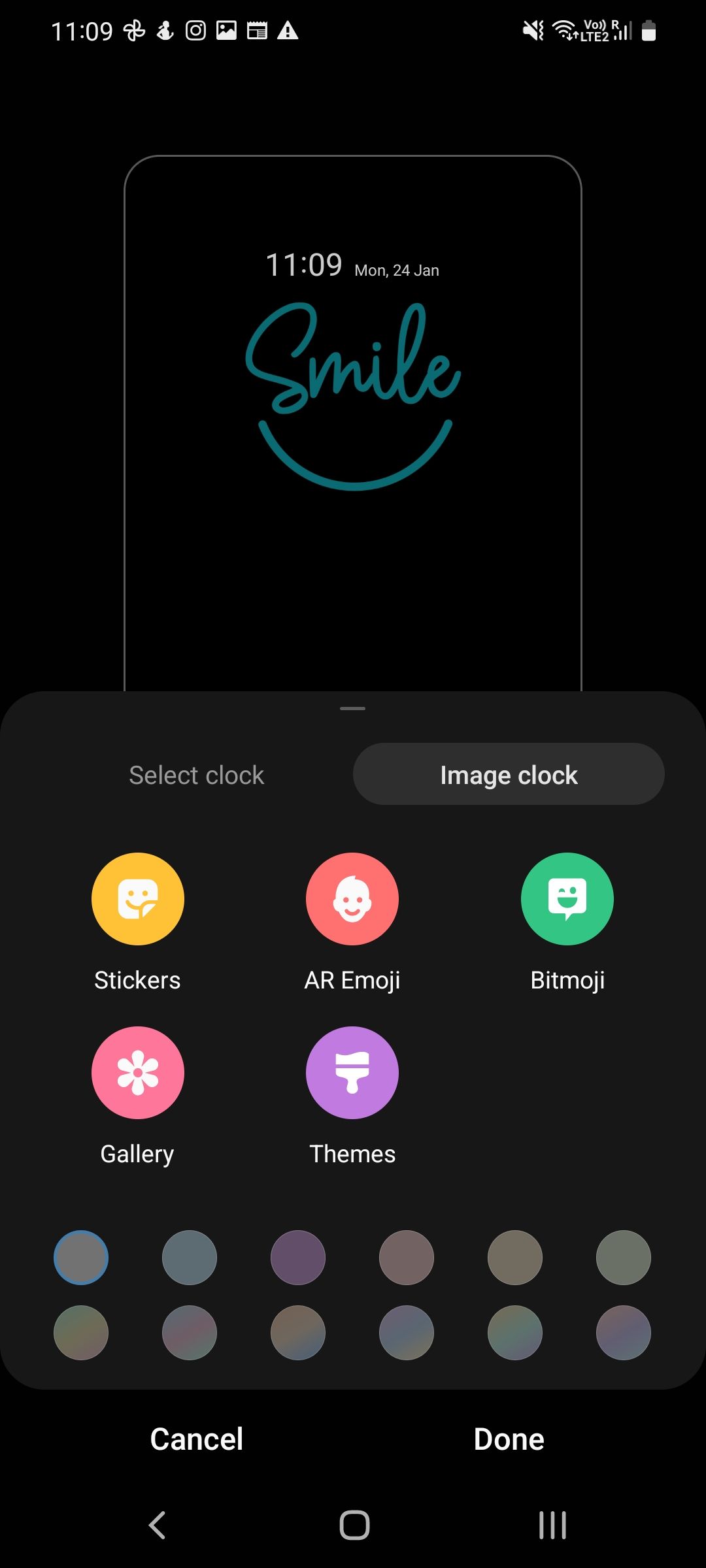
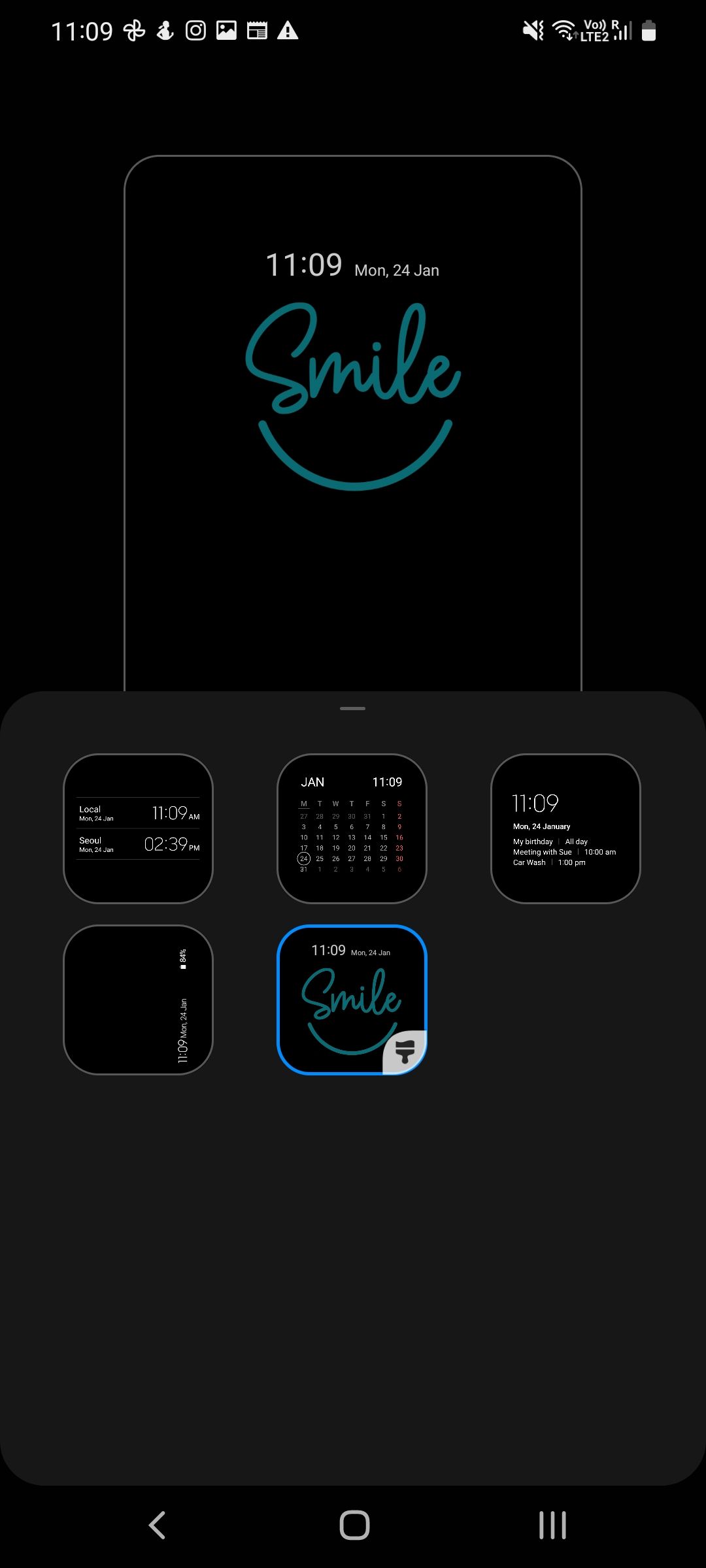
- Download the Clockface Good Lock module for additional clock customization options that provide access to new clock faces. You can also create your own clock face, with the customization option letting you select the color of the second hand.
- Enable the Show music information option if you want the media playback information to be shown in Always On Display mode. You can also change the AOD screen orientation to landscape and enable or disable Auto brightness.
-
Your Galaxy phone shows the fingerprint icon in Always On Display by default. Go to Settings > Biometrics and security > Fingerprint and change this behavior from the Show icon when screen is off option.
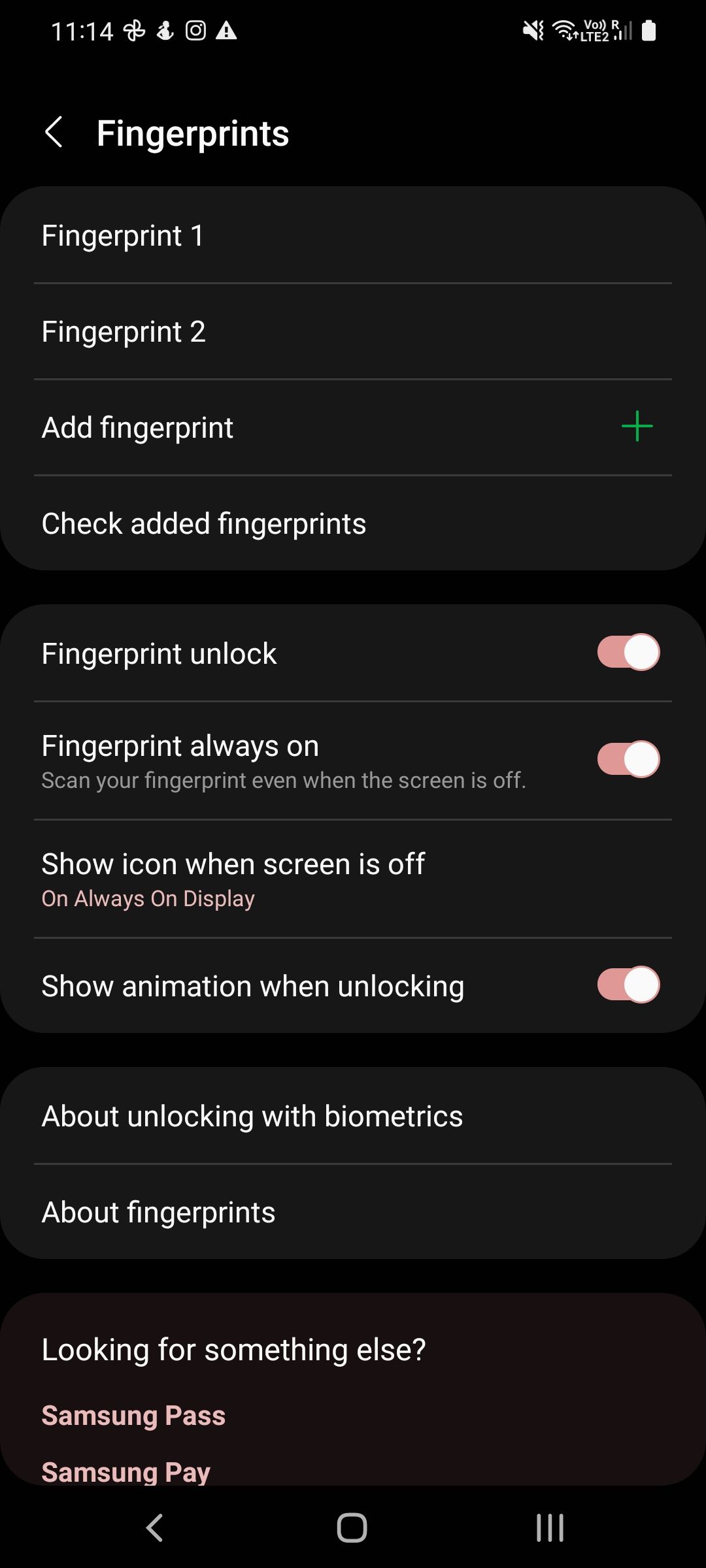
Only icons of unread notifications show in Always On Display. Detailed notifications don't show up. You can double-tap on an icon to open that application.
How to download Always On Display themes quickly
Samsung keeps the Galaxy store supplied with plenty of interesting AOD themes to swipe through and purchase. If your current display feels a little stale, you can quickly review the latest options with these steps.
- Unlock your screen and do a long press on any blank section on your homescreen (where there aren't any widgets or apps).
- In the menu that appears at the bottom of the screen, choose Themes.
- This takes you to the Samsung Store, but visit the new bottom menu and choose AODs.
- Download the theme or themes that you want to use. When themes are finished downloading, you can find them by selecting Themes and going to My Stuff. Then, select the AOD that you want.
-
Choose whether the AOD theme will show both the clock and image or the image only, depending on if you want to keep track of time.
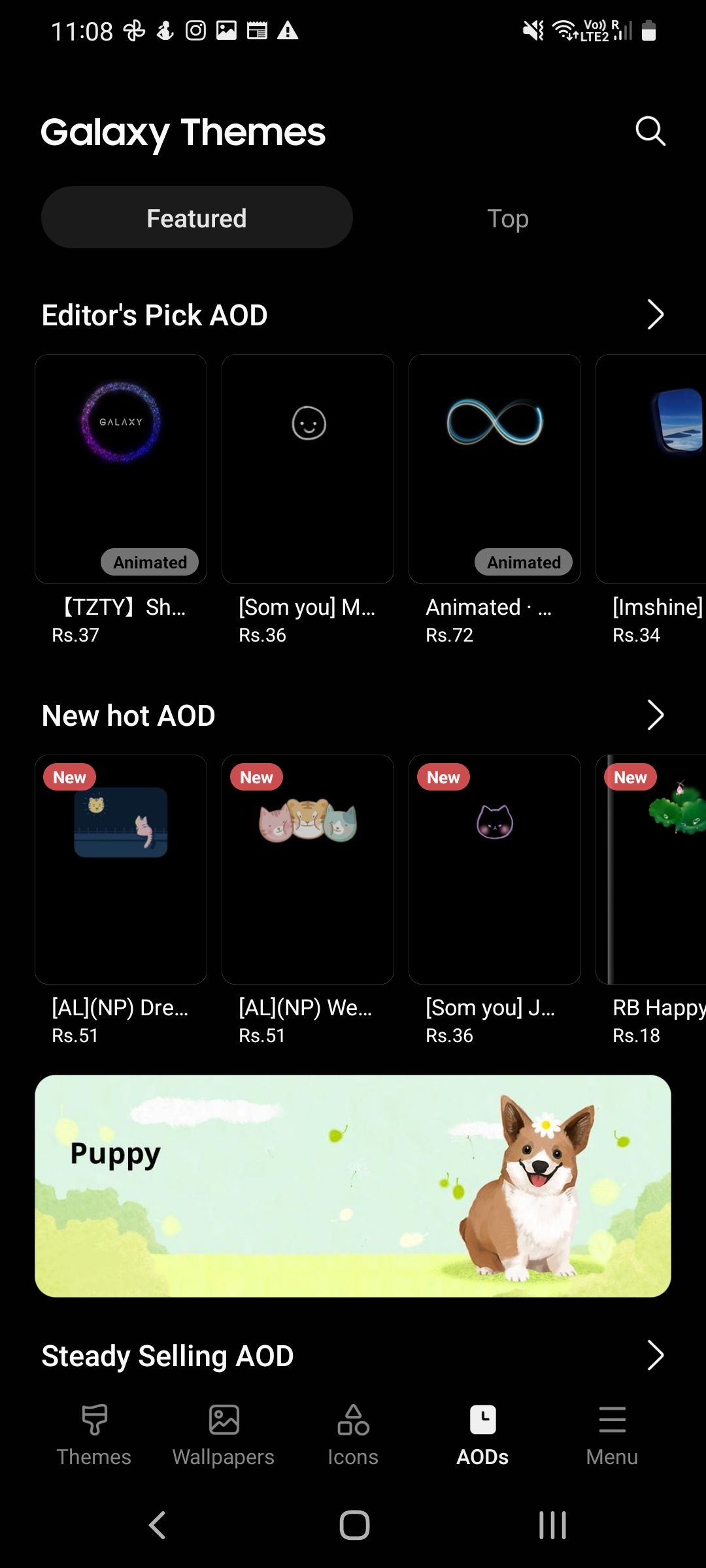
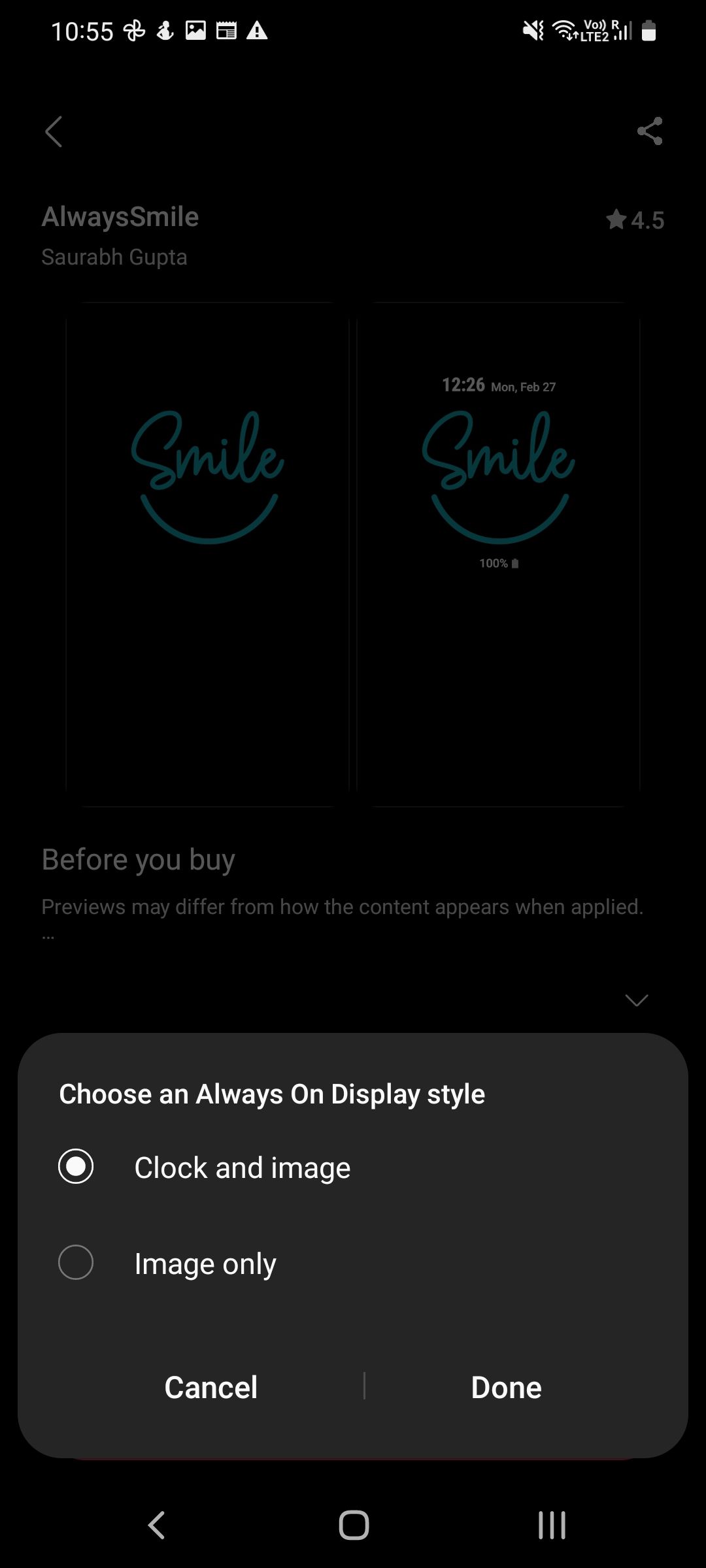
While you can open the Galaxy Store and search for themes, the above process is faster, as it only highlights the AOD themes.
Make AOD into your own phone assistant
With so many customization options, you can set up the Always On Display of your Galaxy phone just the way you like it. The best part is that Samsung keeps improving AOD with additional features and enhancements via regular software updates, like only turning the display on for new notifications and new emoji stickers.

